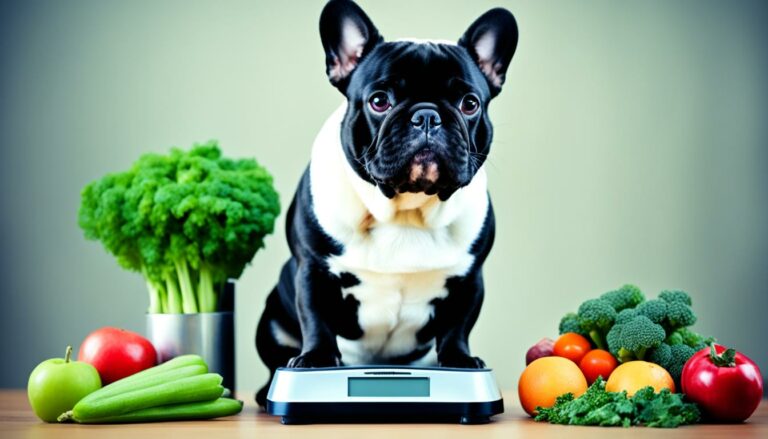Feeding Guidelines

When it comes to feeding your pet, following proper feeding guidelines is essential for their overall health and well-being. One of the first things to consider is the type of food you are feeding your pet. Whether you choose a commercial pet food or a homemade diet, it is important to ensure that it meets their nutritional needs. Look for foods that are labeled as “complete and balanced” to ensure that your pet is receiving the right balance of nutrients.
In addition to choosing the right food, it is important to follow the recommended portion sizes for your pet. The amount of food your pet needs will depend on factors such as their weight, age, and activity level. It is always a good idea to consult with your veterinarian to determine the appropriate portion sizes for your pet. By following proper feeding guidelines, you can help ensure that your pet is receiving the right amount of food to maintain a healthy weight and prevent obesity-related health issues.
Determining Caloric Needs
To ensure that your furry friend receives the appropriate amount of food, it is crucial to determine their caloric needs. Several factors come into play when calculating these needs, including the dog’s age, weight, activity level, and overall health. Puppies, for example, often require more calories to support their growth and development compared to adult dogs. On the other hand, senior dogs may have lower energy requirements due to their decreased activity levels.
A general rule of thumb is to feed approximately 20 calories per pound of body weight for maintenance. However, it’s important to note that this is just a starting point and may need to be adjusted based on individual circumstances. Active and working dogs, for instance, may need more calories to fuel their daily activities, while sedentary dogs may require fewer calories to avoid weight gain. Consulting with your veterinarian can help you determine the ideal caloric intake for your dog, taking into consideration their unique needs and circumstances.
Factors Affecting Portion Control
Determining the right portion size for your pet can be influenced by various factors. One significant factor is the age of your furry companion. Puppies and young dogs have different nutritional requirements compared to adult or senior dogs. Their growing bodies need more calories to fuel their energy levels and support proper development. Therefore, it is vital to adjust portion sizes accordingly, providing them with the necessary nutrients to thrive. Additionally, the breed and size of your dog can affect portion control. Larger breeds often require more food compared to smaller breeds due to their higher energy expenditure. Consider these factors when determining the appropriate portion size for your four-legged friend.
Furthermore, the activity level of your dog can play a role in portion control. Active dogs, such as those involved in agility training or frequent exercise, may require more calories to meet their energy needs. On the other hand, if your dog has a more sedentary lifestyle, it may be necessary to reduce portion sizes to prevent weight gain. Monitoring your dog’s weight is essential in evaluating the effectiveness of portion control. Regular weigh-ins and adjustments to their food intake can help maintain an ideal body condition and overall health. Keep in mind that consulting with your veterinarian can provide valuable guidance on portion control specific to your dog’s individual needs.
Ideal Body Condition Score
Achieving and maintaining an ideal body condition score is crucial for the overall health and well-being of your French Bulldog. A proper body condition score ensures that your dog is at a healthy weight, with an appropriate amount of body fat and muscle mass.
To determine your dog’s body condition score, you can start by examining their body shape and feeling their ribs. Ideally, you should be able to see a defined waistline when looking at your dog from above, and feel their ribs easily with a gentle touch. If your dog’s waistline is not visible, or if their ribs are difficult to feel, they may be carrying excess weight. On the other hand, if their ribs are overly visible or if their waistline is exaggerated, they may be underweight. By regularly assessing and maintaining an ideal body condition score, you can help ensure that your French Bulldog remains healthy and happy throughout their life.
Importance of Portion Control
Portion control is a crucial aspect of maintaining a healthy weight and overall well-being for both humans and their pets. It ensures that the right amount of nutrients is provided in each serving, preventing overeating and potential weight gain. By carefully measuring and controlling portions, pet owners can help regulate their furry friends’ calorie intake and prevent obesity-related health issues such as diabetes, heart disease, and joint problems.
In addition to weight management, portion control plays a significant role in promoting proper digestion and reducing the risk of gastrointestinal issues. By feeding measured portions at regular intervals, the digestive system can effectively break down and absorb nutrients, resulting in a healthier digestive tract. Moreover, maintaining consistent portion sizes allows pet owners to establish a feeding routine that can be easily followed, ensuring that their pets receive the necessary nutrition without excessive under or overfeeding. Ultimately, practicing portion control translates into a happier and healthier pet in the long run.
Common Portion Control Mistakes
One common mistake pet owners make when it comes to portion control is overestimating the amount of food their dog needs. It can be tempting to fill up the food bowl to the brim, thinking that more food equals more nutrition. However, this can easily lead to overfeeding and subsequent weight gain. It is important to follow the feeding guidelines provided by your veterinarian or the pet food manufacturer to ensure your dog is receiving the appropriate portion size for their age, weight, and activity level.
Another common mistake is inconsistent portion sizes. It is easy to get busy or forgetful, and unintentionally vary the amount of food you give your dog from one meal to another. However, this can disrupt their overall nutrition balance and make it difficult to maintain a healthy weight. To avoid this mistake, it is helpful to use measuring cups or a kitchen scale to accurately measure your dog’s food. This ensures that you are providing consistent portion sizes and helps in tracking their caloric intake more effectively.
Using Measuring Cups or Scales
When it comes to portion control for your dog, using measuring cups or scales is an essential tool. Measuring cups ensure that you are providing your dog with the correct amount of food each time. It takes the guesswork out of portioning and allows for consistency in their diet. By using a measuring cup, you can easily determine the exact amount of food your dog needs, based on their size and activity level. This not only helps prevent overfeeding but also ensures that they are getting the necessary nutrients to maintain a healthy weight.
Scales can also be useful, especially if you have a dog that requires more precise portion control. Using a kitchen scale allows you to measure the exact weight of the food you are providing. This method is particularly helpful for small or toy breeds, as their caloric needs may be more delicate. Weighing their food can help ensure that you are not over or underfeeding them, which can have significant effects on their overall health and ideal body condition.
Adjusting Portion Sizes for Age

As dogs age, their nutritional needs change. Just like humans, older dogs tend to have a slower metabolism and may require fewer calories to maintain a healthy weight. As a result, it is important to adjust their portion sizes accordingly.
For senior dogs, it is advisable to consult with a veterinarian to determine the appropriate portion sizes based on their age, weight, activity level, and overall health. The veterinarian may recommend decreasing the amount of food or switching to a senior-specific formula that is lower in calories and higher in nutrients. By carefully adjusting their portion sizes, we can help ensure that our aging dogs receive the right amount of nutrition to support their health and wellbeing.
Monitoring Weight and Adjusting Portions
One of the key factors in maintaining a healthy weight for your pet is closely monitoring their weight and adjusting their portions as needed. Regularly checking your pet’s weight allows you to keep track of any fluctuations and make necessary adjustments to their feeding regimen. By doing so, you can ensure that your furry friend is getting the right amount of food to support their overall health and prevent any potential weight-related issues.
To monitor your pet’s weight, it is recommended to use a reliable scale specifically designed for weighing animals. Weigh your pet regularly, ideally once a month, and keep a record of their weight over time. If you notice any significant changes, such as a sudden increase or decrease in weight, it may be necessary to adjust their portion sizes accordingly. Remember, it’s always best to consult with a veterinarian to determine the appropriate adjustments based on your pet’s specific needs and any potential underlying health concerns they may have.
Feeding Frequency and Portion Control
Determining the feeding frequency and portion control for your pet is essential to ensure their overall health and well-being. The frequency of feeding depends on various factors such as the age, activity level, and metabolism of your pet. Puppies, for instance, require multiple small meals throughout the day to meet their nutritional needs and maintain their energy levels. On the other hand, adult dogs can typically be fed twice a day, although certain breeds may require three meals. It is important to establish a routine and stick to it, avoiding unnecessary fluctuations in feeding frequency.
When it comes to portion control, it is crucial to strike a balance between providing enough nourishment without overfeeding your pet. Each animal has different caloric needs based on factors like age, weight, and activity level. It is recommended to consult with your veterinarian to determine the appropriate portion sizes for your specific pet. Measuring cups or scales can be helpful tools in ensuring accurate portion control. Avoid eyeballing or guessing portion sizes as it can lead to under or overfeeding your pet. By monitoring your pet’s weight regularly and making necessary adjustments to portion sizes, you can help maintain their ideal body condition and overall health.
• Feeding frequency depends on factors such as age, activity level, and metabolism
• Puppies require multiple small meals throughout the day to meet their nutritional needs
• Adult dogs can typically be fed twice a day, although some breeds may require three meals
• Establishing a routine and sticking to it helps avoid unnecessary fluctuations in feeding frequency
• Portion control is crucial for providing enough nourishment without overfeeding your pet
• Each animal has different caloric needs based on age, weight, and activity level
• Consult with your veterinarian to determine appropriate portion sizes for your specific pet
• Measuring cups or scales can help ensure accurate portion control
– Avoid eyeballing or guessing portion sizes as it can lead to under or overfeeding
– Regularly monitor your pet’s weight and make necessary adjustments to portion sizes
– Maintaining ideal body condition promotes overall health
Portion Control for Treats and Snacks
When it comes to portion control for treats and snacks, it’s important to remember that moderation is key. These extra nibbles can quickly add up in terms of calories and can contribute to weight gain if not properly monitored. It’s recommended to choose treats and snacks that are low in calories and high in nutritional value, such as small pieces of fruits or vegetables, to provide your French Bulldog with a satisfying snack without overindulging them.
Special Considerations for French Bulldogs

French Bulldogs are beloved for their distinctive appearance and friendly personalities. However, it’s important to be mindful of certain special considerations when it comes to their diet and portion control. Due to their unique body structure, French Bulldogs are prone to weight gain, which can lead to various health issues. Therefore, it is crucial to provide them with a balanced and appropriate diet to maintain their overall well-being.
One key consideration for French Bulldogs is their relatively low activity level compared to other breeds. This means they require fewer calories to meet their energy needs. It’s important to consult with a veterinarian to determine the optimal caloric intake for your French Bulldog based on their age, weight, and activity level. Additionally, measuring their food portions accurately can help prevent overfeeding and obesity, which can put undue strain on their joints and respiratory system. By being mindful of portion control, French Bulldog owners can help ensure their pet maintains a healthy weight and quality of life.
Consulting a Veterinarian for Portion Control Advice
It is essential to consult a veterinarian for accurate and personalized portion control advice for your French Bulldog. Vets are trained professionals who have the knowledge and experience to assess the unique needs of your pet. They can conduct a thorough examination to determine the ideal body condition score and caloric needs of your French Bulldog. By taking into account factors such as age, activity level, and overall health, a veterinarian can provide tailored guidance on portion sizes and feeding frequency. Their expertise ensures that your furry friend is receiving the appropriate amount of nutrition to maintain a healthy weight and overall well-being
Why is it important to consult a veterinarian for portion control advice?
Consulting a veterinarian is crucial because they have the expertise to assess your pet’s specific needs and provide tailored portion control advice based on factors like age, breed, weight, and health conditions.
What are feeding guidelines?
Feeding guidelines are general recommendations provided by veterinarians or pet food manufacturers to help pet owners determine the appropriate amount of food to feed their pets based on their weight, age, and activity level.
How do I determine my pet’s caloric needs?
Veterinarians can help determine your pet’s caloric needs by considering factors such as their age, weight, breed, activity level, and overall health. They may use formulas to estimate the daily calorie requirement.
What factors can affect portion control?
Several factors can affect portion control, including age, weight, activity level, health conditions, metabolism, and the type of food being fed. A veterinarian can assess all these factors to determine the appropriate portion sizes for your pet.
What is an ideal body condition score?
An ideal body condition score is a numerical scale used by veterinarians to assess a pet’s body weight and overall body condition. It helps determine whether a pet is underweight, overweight, or at an optimal weight.
Why is portion control important for pets?
Portion control is important for pets to maintain a healthy weight and prevent obesity-related health problems. Controlling portion sizes ensures that pets receive the right amount of nutrients and avoids overfeeding.
What are some common portion control mistakes to avoid?
Common portion control mistakes include overfeeding, free-feeding, relying on visual estimation instead of measuring cups or scales, feeding too many treats, and not adjusting portion sizes according to age or weight changes.
Should I use measuring cups or scales to measure portions?
Yes, it is recommended to use measuring cups or scales to measure portions accurately. This helps maintain consistency and avoid overfeeding or underfeeding.
How should I adjust portion sizes for my pet’s age?
As pets age, their caloric needs may change. Consult your veterinarian to determine the appropriate portion sizes for different life stages and make adjustments accordingly.
How often should I monitor my pet’s weight and adjust portions?
It is recommended to regularly monitor your pet’s weight, ideally every 4-6 weeks, and adjust portions accordingly. If there are significant weight changes, consult your veterinarian for guidance.
How does feeding frequency affect portion control?
Feeding frequency can affect portion control as it determines the overall calorie intake. Depending on your pet’s needs, your veterinarian can provide guidance on how many meals to offer and the portion sizes for each meal.
How should I control portions for treats and snacks?
It is important to control portions for treats and snacks to avoid excessive calorie intake. Your veterinarian can advise on the appropriate number and size of treats based on your pet’s overall diet and health.
Are there any special considerations for French Bulldogs in terms of portion control?
French Bulldogs may have specific dietary needs and are prone to obesity. Consulting a veterinarian for portion control advice is crucial to ensure they receive the right amount of food and maintain a healthy weight.
What should I expect when consulting a veterinarian for portion control advice?
When consulting a veterinarian for portion control advice, you can expect a thorough assessment of your pet’s needs, including their health history, current weight, activity level, and dietary habits. The veterinarian will then provide tailored recommendations for portion sizes and feeding guidelines.
Hi, I’m Alex! At FrenchyFab.com, I share my expertise and love for French Bulldogs. Dive in for top-notch grooming, nutrition, and health care tips to keep your Frenchie thriving.



